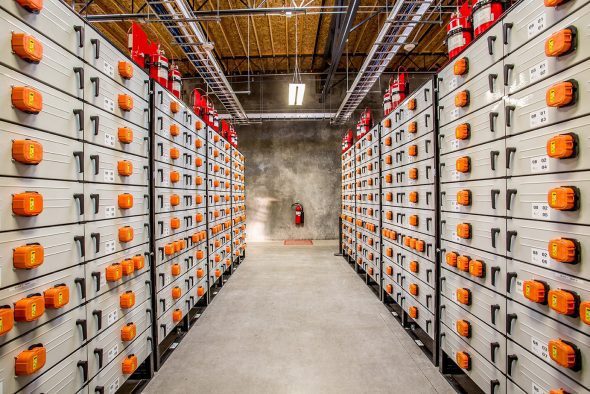The Victoria Labor government has announced that it is calling for expressions of interest to build a 20MW battery storage array, in what would likely be Australia’s first grid scale battery storage facility.
The government says the 20MW battery storage facility is being earmarked for western Victoria, where the Australian Energy Market Operator has identified opportunities to improve grid stability, and where many of the state’s wind farms and proposed solar farms are located.
Indeed, the western grid of Victoria has suffered several major faults in the past 15 months, resulting in load shedding, or rolling blackouts in the neighbouring state of South Australia and at the Alcoa aluminium refinery, that were blamed on renewable energy rather than the grid.
The government, which plans to lift the state’s share of renewable energy to 25 per cent by 2020, and to 40 per cent by 2025, says that storage will play a vital role in better integrating renewable energy generation, keeping the lights on and keeping power prices in check.
“We are in the midst of a major global transformation and we’re making sure Victoria is equipped with the next generation of energy technologies that will support a resilient energy system,” state energy minister Lily D’Ambrosio said in a statement.
“The 20MW battery will be the first of its kind for Australia, it will help to modernise Victoria’s electricity grid, enhance energy security and deliver affordable energy.
“We’re taking the action required to ensure reliable and affordable energy supply for Victorians while we deliver on our renewable energy target.”
Numerous other battery storage installations have been announced or considered, although none at this scale. Several utilities are trialling storage in multiple homes and businesses, and also in smaller 1MW installations at grid level.
South Australia has been mulling a significant grid level storage installation, as have some private solar projects, but none have been formally commissioned as yet.
The project will dovetail with work being done by the Australian Renewable Energy Agency (ARENA) and Clean Energy Finance Corporation (CEFC). ARENA has agreed that the project chosen as part of the Andrews Labor government’s initiative will receive Agency funding if it meets the selection criteria.
Expressions of interest from utility-scale battery storage businesses are being sought by 1 March 2017, and are to be provided to the Victorian Department of Environment, Land, Water and Planning (DELWP) at [email protected]. A formal tender will be issued in April.










